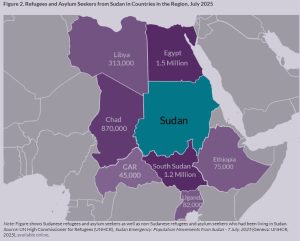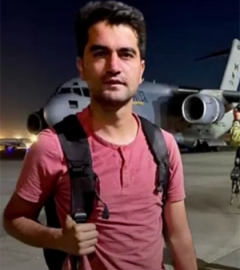Africa’s forgotten humanitarian disaster
Sudan’s ongoing civil war has quietly become the world’s worst and most under-reported humanitarian crisis.
The conflict in the African country has created the world’s largest and fastest-growing displacement, yet this crisis has been overshadowed by events in Gaza and Ukraine.
Violence began to spread rampantly across the country in April 2023 and had claimed an estimated 150,000 lives by June 2024.
Around 12 million people are estimated to have been forced to leave their homes as of July this year, including 7.7 million internally displaced persons (IDPs), more than half of them children, according to the UN refugee agency UNHCR.
About 4.1 million of the displaced have left Sudan to seek protection: 3.2 million Sudanese as well as about 800,000 refugees from other countries who returned to their place of origin or relocated elsewhere, UNHCR says.
Famine has been declared in parts of the country, including in a displacement camp. Displaced people have been pushed at times into conflict zones where access to basic services and protection is limited or absent. 
The war escalated from a power struggle between two rival factions within the country’s military establishment: the Sudanese Armed Forces (SAF) and the paramilitary Rapid Support Forces (RSF).
A UN fact-finding mission in 2024 found that both sides have committed human-rights violations and international crimes, including indiscriminate attacks on civilians, arbitrary arrests, rape, torture, and extrajudicial executions.
The RSF has been accused of committing genocide against non-Arab ethnic groups in Darfur and the SAF of deploying chemical weapons against both civilian and military targets.
The conflict and its associated displacement are likely to have disastrous repercussions for the future of Sudan and its neighbours for years to come, UNHCR says.
While Sudan has suffered civil wars before, the scale of the current crisis is unprecedented.
At the same time, global cuts to humanitarian aid have reduced the amount of support available for displaced people and may prolong the crisis. 
The war is unprecedented in nature, magnitude, and impact.
For instance, while previous conflicts took place in remote rural areas, this one started in Khartoum and at the heart of the government.
Within days of fighting beginning, the RSF took control of most of the capital and federal government institutions, including the country’s main airport, the army and security headquarters, the presidential palace, almost all federal ministries, and the central bank headquarters.
The occupation of most parts of greater Khartoum was significant because the capital is home to about one-eighth of the country’s population and most of its leading educational institutions.
The central government was almost paralysed in the first weeks of the conflict.
The SAF and its allies have destroyed squatter settlements and makeshift homes around Khartoum where IDPs had been driven. In central Sudan, accusations of collaboration with the RSF were used as a pretext to burn down villages. RSF forces have used similar deliberate displacement strategies against adversaries in Darfur.
The conflict has brought significant destruction and suffering.
Totalling numbers of deaths from conflict and due to famine, disease, and lack of health care, the total war-related death toll could exceed 150,000, UNHCR says.
A London School of Hygiene and Tropical Medicine study estimated that more than 61,000 people died in Khartoum alone between April 2023 and June 2024.
Many more people are believed to be dying from hunger and disease than from conflict, with children particularly affected.
The Sudan Doctors Union has reported that more than 522,000 infants had died from malnutrition between the outbreak of war and January 2025.
A cholera outbreak, which killed 546 people in 2024, has affected ten states including White Nile, home to many South Sudanese refugees.
By February 2025, at least 11 of Sudan’s 18 states were facing three or more disease outbreaks, including cholera, dengue, malaria, measles, or diphtheria.
The health-care system was already weak and has become worse, with 80 percent of hospitals in the worst-hit areas not working.
Education is virtually non-existent in Sudan with almost all 19 million school-age children out of school. Ninety percent of all 23,000 schools have been closed or are unreachable, as are all universities.












